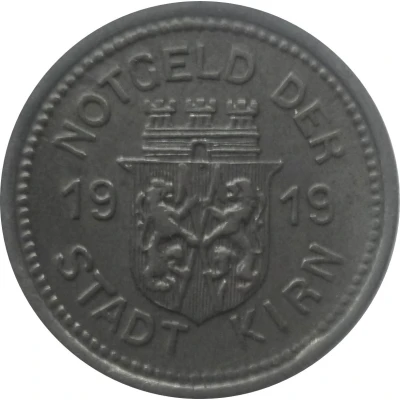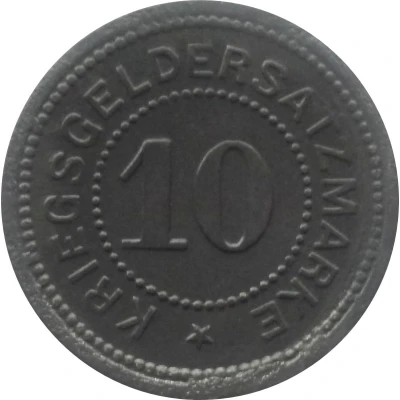


© Willem63 (CC BY-NC-SA)
10 Pfennigs - Kirn
1919 year| Zinc | 2.2 g | 19.9 mm |
| Issuer | City of Kirn (Prussian province of Rhine) |
|---|---|
| Period | Weimar Republic (1918-1933) |
| Type | Standard circulation coin |
| Year | 1919 |
| Value | 10 Pfennigs (10 Pfennige) (0.10) |
| Currency | Mark (1914-1924) |
| Composition | Zinc |
| Weight | 2.2 g |
| Diameter | 19.9 mm |
| Thickness | 1.2 mm |
| Shape | Round |
| Technique | Milled |
| Orientation | Medal alignment ↑↑ |
| Demonetized | Yes |
| Updated | 2024-10-04 |
| Numista | N#83197 |
|---|---|
| Rarity index | 75% |
Reverse
Pearl rim, legend surrounding pearl circle with denomination centered
Script: Latin
Lettering:
KLEINGELDERSATZMARKE
10
★
Edge
Plain
Comment
Issuing body: [Stadt, Rheinprovinz].Interesting fact
The 10 Pfennigs - Kirn 1919 coin from the City of Kirn (Prussian province of Rhine) made of Zinc weighing 2.2 g is interesting because it was produced during a time of economic and political turmoil in Germany. The coin was issued in 1919, just after the end of World War I, when Germany was facing severe economic challenges, including hyperinflation and a large national debt. Despite these challenges, the coin was made of zinc, which was a relatively inexpensive material, and it was designed to be used as a standard circulation coin, indicating that it was intended for everyday use by the general population. This coin is a tangible reminder of the economic and political struggles that Germany faced in the aftermath of World War I.